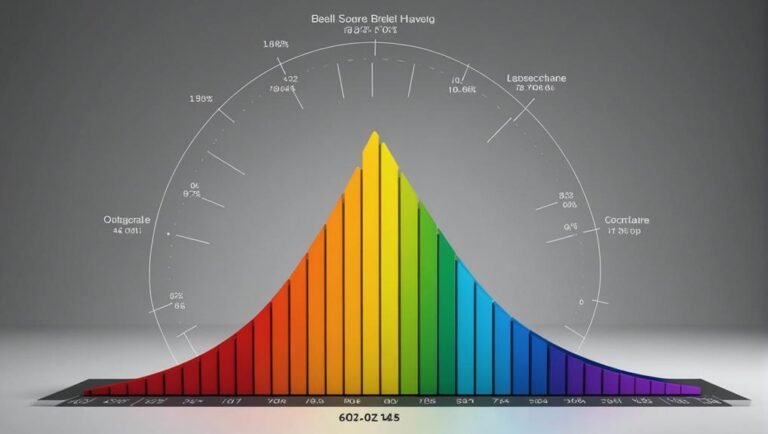Accounts Receivable Aging: Definition, Calculation, and Benefits
Accounts Receivable Aging serves as a powerful tool for businesses to assess the status of their outstanding invoices, offering insights into payment trends and highlighting potential areas of concern. By understanding the aging of accounts receivable, organizations can take proactive measures to optimize their cash flow, refine collection processes, and make informed decisions regarding credit management. However, the true value of Accounts Receivable Aging extends beyond these aspects, providing a foundation for strategic planning and financial stability that can greatly influence a company's overall performance and competitiveness in the market.
Key Takeaways
- Provides detailed breakdown of outstanding receivables by due dates.
- Helps in evaluating collection strategies' effectiveness.
- Enhances cash flow management and operational efficiency.
- Prioritizes collection efforts based on aging of invoices.
- Improves financial health by ensuring timely payments.
Importance of Accounts Receivable Aging
The significance of Accounts Receivable Aging lies in its ability to provide a detailed breakdown of outstanding receivables based on the age of invoices, offering valuable insights into a company's financial health and liquidity. By categorizing receivables into different aging buckets, ranging from current to severely overdue, this analysis helps in evaluating the effectiveness of collection strategies.
It enables companies to pinpoint areas where invoices are lingering unpaid, prompting targeted collection efforts to improve cash flow. Understanding the liquidity insights derived from Accounts Receivable Aging aids in appraising credit policies and customer payment behaviors. This breakdown facilitates the identification of potential bad debts early on, guiding the establishment of appropriate reserves and enhancing financial decision-making processes.
Calculating Accounts Receivable Aging
In evaluating Accounts Receivable Aging, the process involves categorizing outstanding receivables based on their respective due dates to provide a thorough overview of the aging of invoices within a company's financial records.
This aging analysis typically divides receivables into categories like current, 1-30 days, 31-60 days, 61-90 days, and over 90 days past due. By segmenting receivables in this manner, businesses can assess the effectiveness of their collection strategies and prioritize the collection of overdue accounts.
The analysis aids in identifying trends, potential issues in payment processing, and the need for adjustments in credit policies. Additionally, it enables companies to implement targeted collection efforts to improve cash flow and minimize bad debt risks.
Benefits of Accounts Receivable Aging
Enhancing cash flow management through effective utilization of Accounts Receivable Aging offers invaluable insights into a company's financial health and operational efficiency. By categorizing outstanding ARs based on their due dates, businesses can prioritize collection efforts, thereby enhancing collection efficiency.
This process not only helps in identifying overdue accounts but also provides vital financial insights into the company's liquidity position. Understanding the aging of receivables can aid in evaluating the effectiveness of credit policies and streamlining collection procedures.
Analyzing Accounts Receivable Aging
Analyzing Accounts Receivable Aging provides crucial insights into a company's financial performance and credit management efficiency by evaluating the aging of outstanding receivables. By categorizing receivables based on their age, businesses can assess the effectiveness of their collection strategies and optimize cash flow. The table below illustrates how this analysis can help in improving financial operations:
| Age of Receivables | Percentage of Total | Action Required |
|---|---|---|
| Current | 60% | Maintain |
| 1-30 days past due | 25% | Follow-up |
| 31-60 days past due | 10% | Reminder |
| Over 60 days past due | 5% | Collection |
This breakdown aids in prioritizing collection efforts, enhancing cash flow optimization, and ensuring timely payments for sustained financial health.
Improving Accounts Receivable Aging
To optimize Accounts Receivable Aging, a thorough strategy for proactive collection management is crucial. Collection strategies play an essential role in enhancing the efficiency of receivables management. By implementing tailored approaches such as regular follow-ups, incentivized early payments, and clear communication channels, businesses can expedite the collection process and reduce aging trends.
Analyzing aging trends provides valuable insights into payment patterns, allowing for the identification of potential bottlenecks and overdue accounts. Monitoring these trends enables companies to take timely actions to prevent further delays and minimize bad debt risks.
Continual evaluation and adjustment of collection strategies based on aging trends are essential to improving overall accounts receivable aging performance.
Conclusion
To sum up, the meticulous analysis of accounts receivable aging is paramount for businesses seeking financial prowess and operational efficiency.
By delving into the depths of unpaid invoices, companies can uncover hidden patterns, optimize collection strategies, and fortify cash flow management.
The power of accounts receivable aging transcends mere numbers, offering a strategic advantage that propels organizations towards sustainable growth and success.





